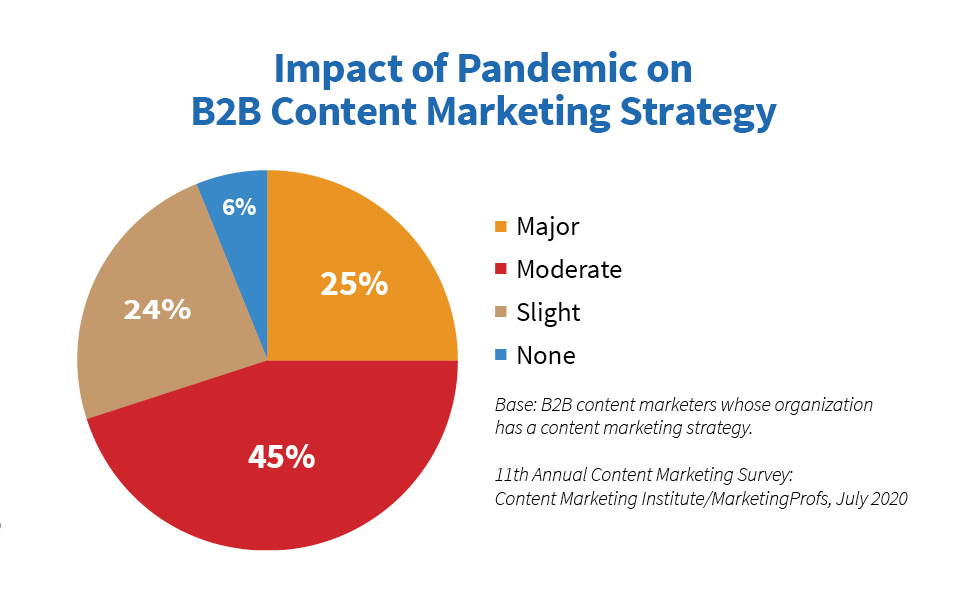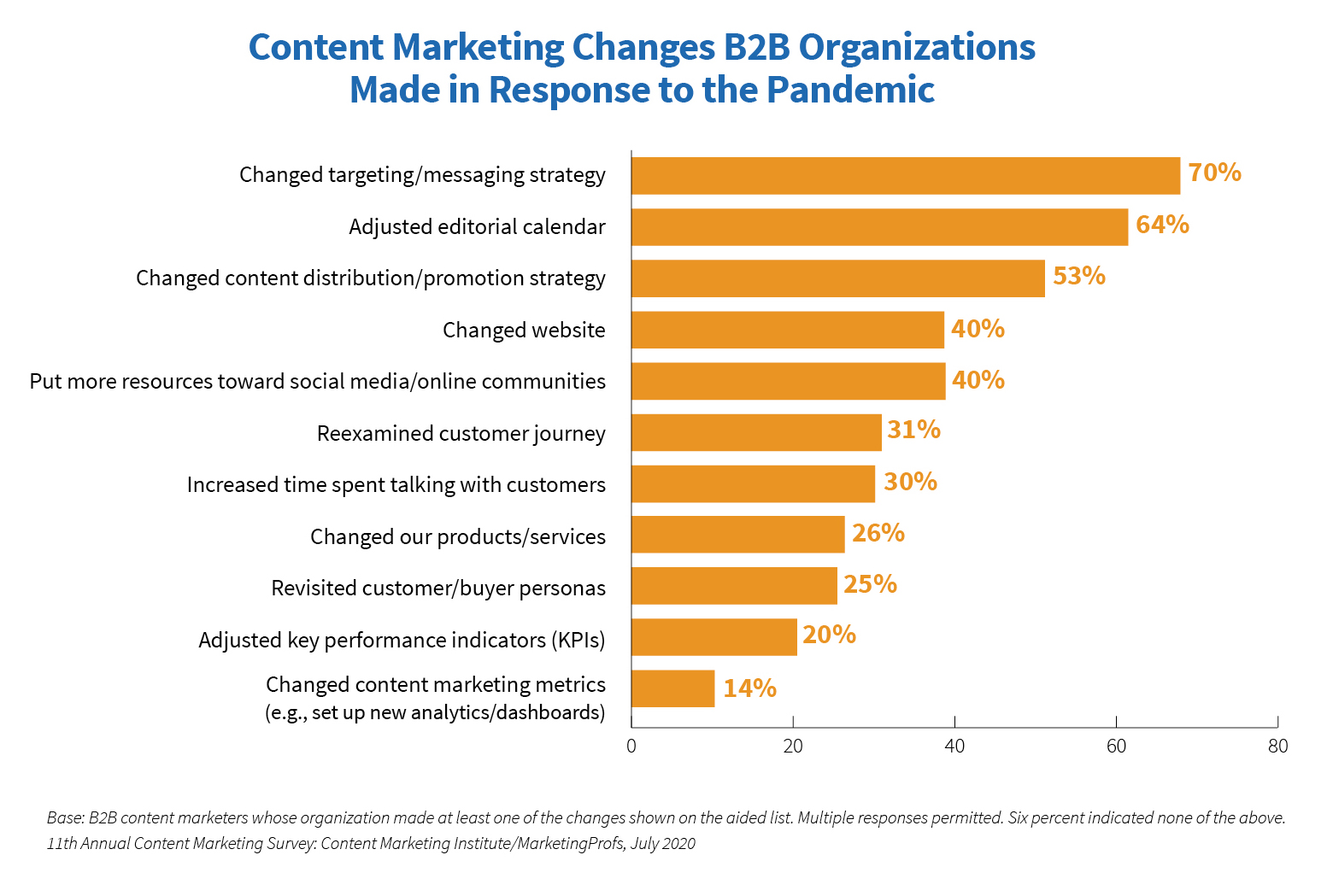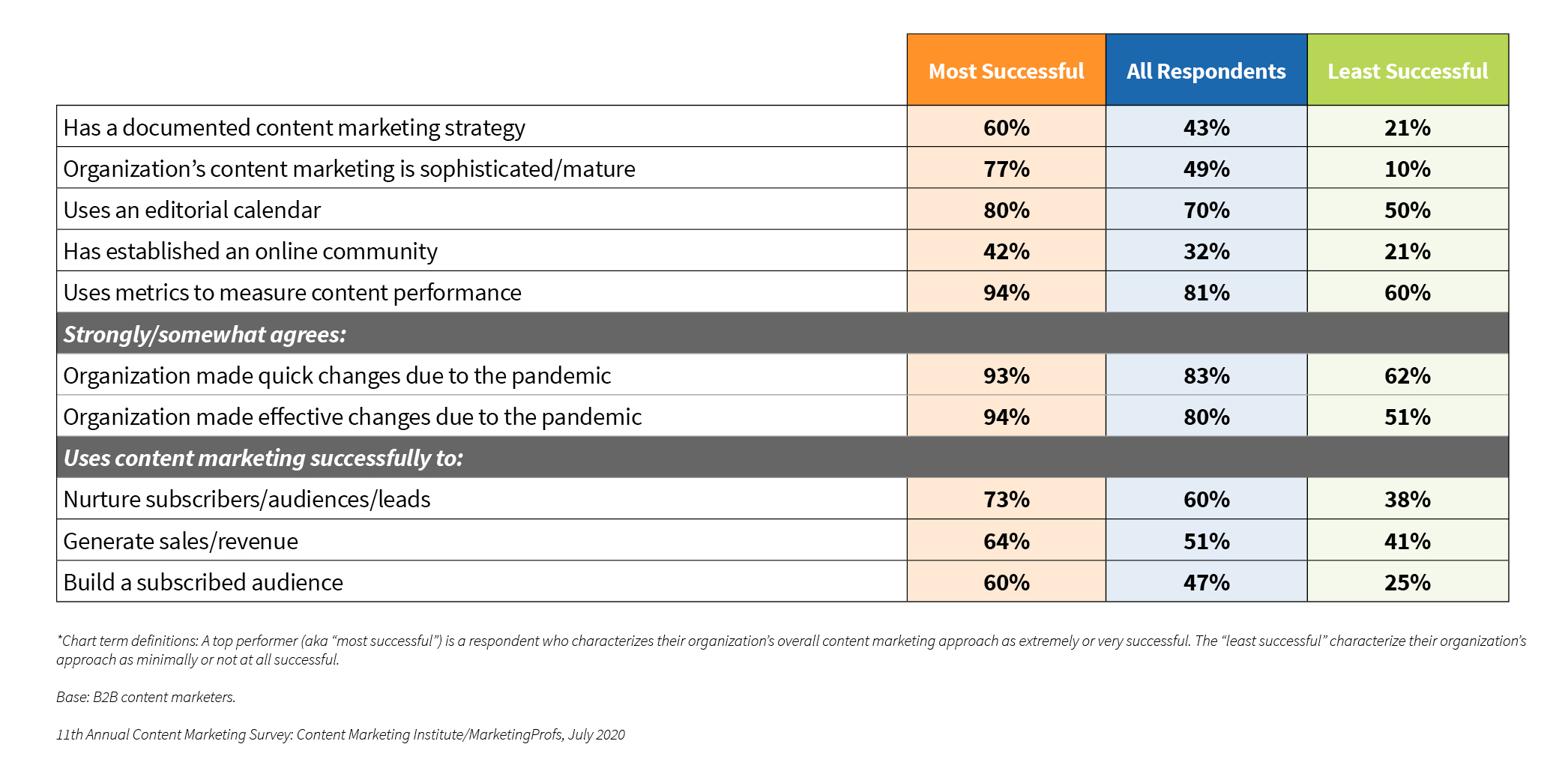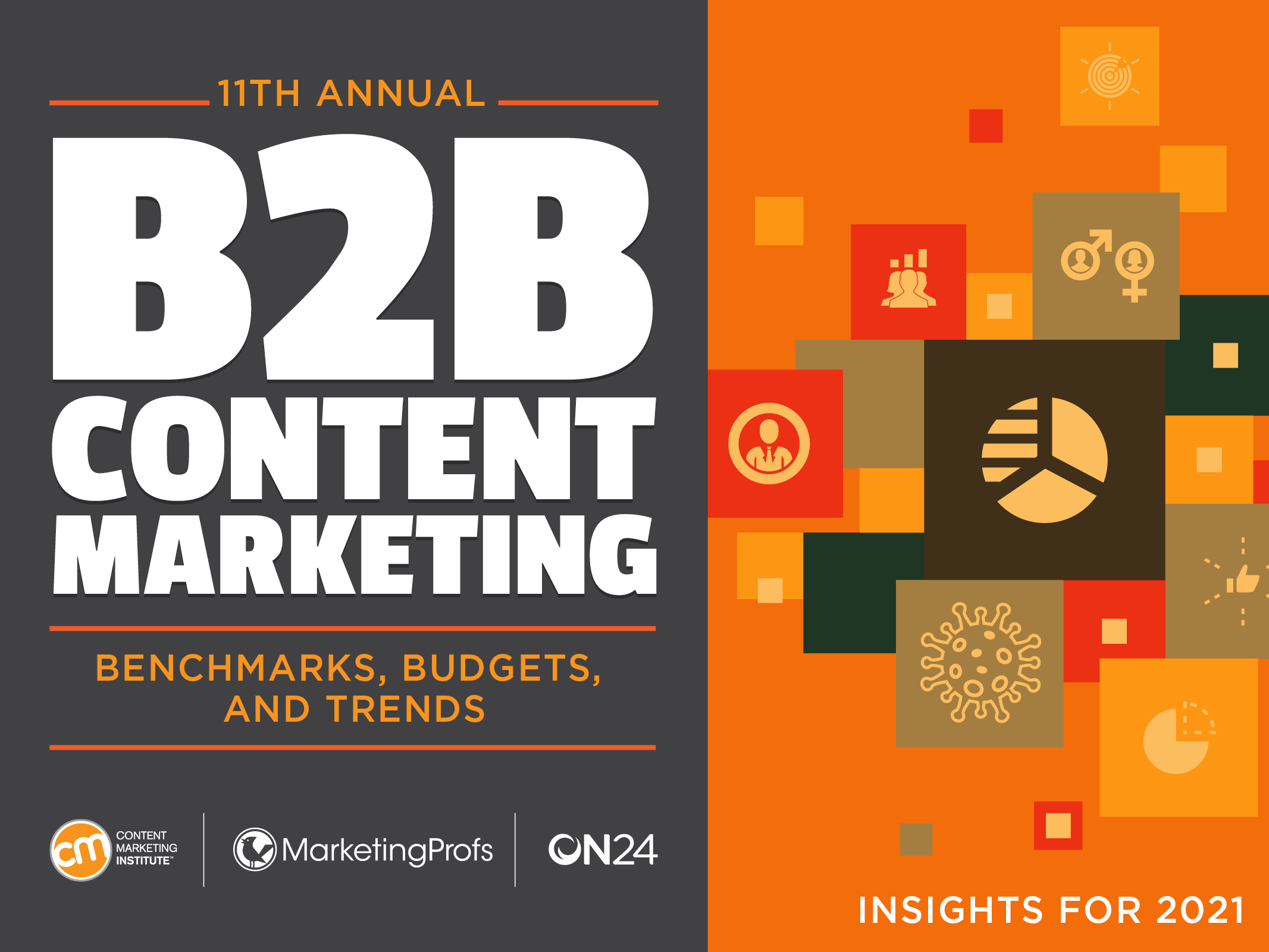What are content marketers doing? How are they doing it? Are they successful?
For the past 11 years, we’ve asked content marketers those questions, which have helped many teams check their practices, budgets, and priorities against their peers and plan for the future.
This year, we asked many of those same questions. Given the unique changes and challenges of 2020, we added a set of questions to gauge marketers’ responses to the pandemic in the short term and as they plan for 2021.
You can read the full results of the research hot off the virtual presses today in the 11th Annual B2B Content Marketing Benchmarks, Budgets, and Trends: Insights for 2021 report, produced by Content Marketing Institute and MarketingProfs, and sponsored by ON24. It’s filled with insights into what content marketers are thinking, doing, and not doing in these following categories:
- Content creation and distribution
- Metrics and goals
- Team structure and outsourcing
- Budgets and spending
I want to highlight some results that should bring you relief (knowing you’re not alone in your challenges and successes) as well as some results that will make you think.
Pivoting to success
In April, I wrote that content marketing could be the shining star in a brand’s pandemic-affected marketing strategy. Our survey results reveal that many of you thought so, too, and took steps to make it happen.
More than eight in 10 said their organizations pivoted quickly. Four out of five said their pivots were effective. And these weren’t just reactionary: 86% expect some of the changes to stay in effect for the foreseeable future.

Of those who have a content marketing strategy, one-fourth made major changes to it, while 69% slightly or moderately modified it because of the pandemic.
94% of surveyed content marketers changed their #contentmarketing strategy because of the pandemic, says @EditorStahl via @CMIContent. #B2B #Research Click To Tweet
What changes did they make?
Over half changed targeting/messaging strategy (70%), adjusted their editorial calendars (64%), and/or changed their content distribution and promotion strategy (53%).
Less than a third dug into customer-focused work: re-examining the customer journey, increasing time spent talking to customers, or revisiting customer/buyer personas.
And even fewer adjusted key performance indicators (KPIs) and metrics.

Here’s the thing:
Content marketers reacted quickly and admirably to the pandemic’s impact by addressing immediate needs – messages, calendars, and distribution. Those are great and necessary in-the-moment changes. As the effects of the pandemic drag on, though, putting the customer first will be key to long-term success.
When big or even moderate changes happen that affect your customers, that’s the time to boost your audience-focused research activities. Priorities will shift. Pain points will change. Resources may be limited (or increased) based on those priorities and pain levels. But if you’re not doing the research, you can’t adapt your content to address revised priorities.
To adapt #content to shifting customer priorities, you must know how your customers’ lives are changing, says @EditorStahl via @CMIContent. #B2B #Research Click To TweetAnother thing to note: Content marketing program success (i.e., budget support) usually is determined by how well you achieve the goals set. That’s why I was concerned to see that only a few content marketers revised their key performance indicators and metrics.
Make sure you don’t fall into that trap. When you make a change in your content marketing strategy or implementation, revisit your KPIs and metrics to make sure they’re appropriate. If they are, that’s great. But have you checked lately? If not, set up a team meeting right now to review.
See Page 5 of the report for more details on how COVID-19 is affecting content marketers.
HANDPICKED RELATED CONTENT:
Learning from top performers
One of the sections of the report we study every year is the differentiators – the things most successful content marketers do that the least successful don’t.
What stood out to me this year is the stark differences between these groups in two important areas: purpose and actions.
Top performers were more likely to use content marketing successfully for goals beyond brand awareness and early stages of the sales funnel:
- 73% nurture subscribers, audiences, or leads (only 38% of the least successful do).
- 64% generate sales/revenue (only 41% of the least successful do).
- 60% build a subscribed audience (only 25% of the least successful do).
Top performers also share similarities in how they implement their content marketing programs:
- Almost all (94%) top performers measure their content performance (60% of the least successful do).
- Four out of five top performers use an editorial calendar (only half of the least successful do).

Here’s the thing:
Limiting goals to brand awareness and top-of-funnel activities limits the impact of your content marketing work. Content marketing also must connect to the core business purpose – to serve customers and to have an impact on the bottom line. Customer journeys are anything but linear these days (were they ever?). Don’t expect them to connect with your thought leadership content and follow you neatly down path to purchase. But you better be sure to have great content for them whenever and wherever they decide to check in with you. Can they count on you?
#Contentmarketing must connect to the core business purpose: serve customers and affect the bottom line, says @EditorStahl via @CMIContent. Click To TweetTop performers get that – they’re more likely to generate sales/revenue and they’re more likely to nurture existing customers and subscribers.
I also see a promising trend: More content marketers are recognizing the value of strengthening their relationship with their audiences. Two years ago, only 68% of all respondents said building trust was a goal. In this year’s report, the number has jumped to 81%. I honestly can’t think of a more important goal right now. Also, two years ago, only 54% of all respondents said building loyalty with existing customers was a goal, while that number jumped to 68% in this report. With trust comes loyalty. If this isn’t a top priority, it’s time to rethink your content marketing strategy.
HANDPICKED RELATED CONTENT:
Heading into 2021
New to our annual research report this year is counsel from CMI’s Chief Strategy Advisor Robert Rose. I encourage you to read all his advice, but I’ll leave you with this poignant thought:
“We wonder what the ‘new normal’ will be. Spoiler alert: No one knows.
“What can you do, then? … Remember that answering the ‘what now’ is not trying to plan for ‘what’s next’ … Ask how you might change to prepare for whatever comes next.”
Resilience in #marketing is the ability to adapt to the next version of whatever comes next, says @Robert_Rose via @CMIContent. Click To TweetCover image by Joseph Kalinowski/Content Marketing Institute

